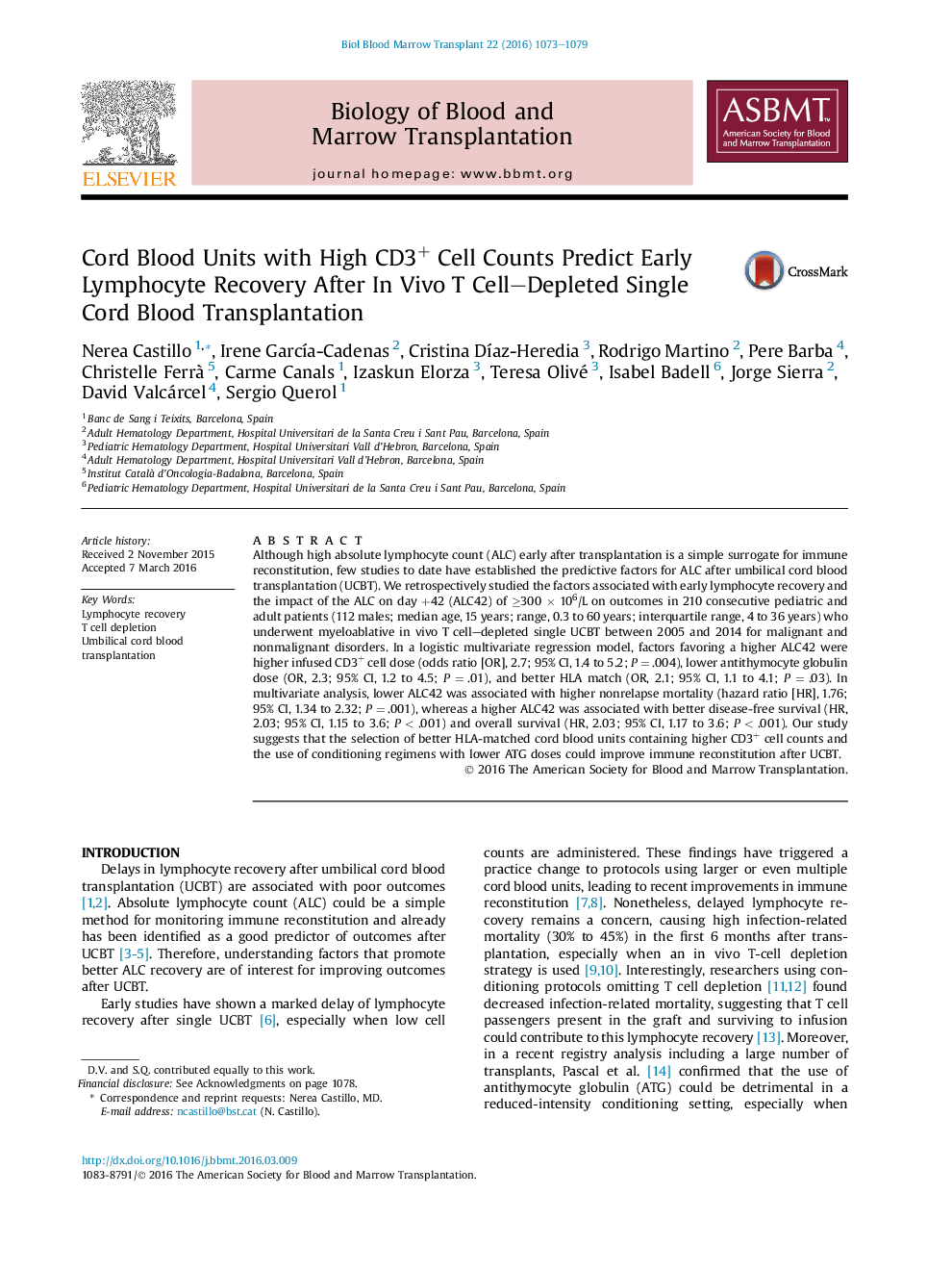| Article ID | Journal | Published Year | Pages | File Type |
|---|---|---|---|---|
| 8431087 | Biology of Blood and Marrow Transplantation | 2016 | 7 Pages |
Abstract
Although high absolute lymphocyte count (ALC) early after transplantation is a simple surrogate for immune reconstitution, few studies to date have established the predictive factors for ALC after umbilical cord blood transplantation (UCBT). We retrospectively studied the factors associated with early lymphocyte recovery and the impact of the ALC on day +42 (ALC42) of â¥300 Ã 106/L on outcomes in 210 consecutive pediatric and adult patients (112 males; median age, 15 years; range, 0.3 to 60 years; interquartile range, 4 to 36 years) who underwent myeloablative in vivo T cell-depleted single UCBT between 2005 and 2014 for malignant and nonmalignant disorders. In a logistic multivariate regression model, factors favoring a higher ALC42 were higher infused CD3+ cell dose (odds ratio [OR], 2.7; 95% CI, 1.4 to 5.2; P = .004), lower antithymocyte globulin dose (OR, 2.3; 95% CI, 1.2 to 4.5; P = .01), and better HLA match (OR, 2.1; 95% CI, 1.1 to 4.1; P = .03). In multivariate analysis, lower ALC42 was associated with higher nonrelapse mortality (hazard ratio [HR], 1.76; 95% CI, 1.34 to 2.32; P = .001), whereas a higher ALC42 was associated with better disease-free survival (HR, 2.03; 95% CI, 1.15 to 3.6; P < .001) and overall survival (HR, 2.03; 95% CI, 1.17 to 3.6; P < .001). Our study suggests that the selection of better HLA-matched cord blood units containing higher CD3+ cell counts and the use of conditioning regimens with lower ATG doses could improve immune reconstitution after UCBT.
Related Topics
Life Sciences
Biochemistry, Genetics and Molecular Biology
Cancer Research
Authors
Nerea Castillo, Irene GarcÃa-Cadenas, Cristina DÃaz-Heredia, Rodrigo Martino, Pere Barba, Christelle Ferrà , Carme Canals, Izaskun Elorza, Teresa Olivé, Isabel Badell, Jorge Sierra, David Valcárcel, Sergio Querol,
